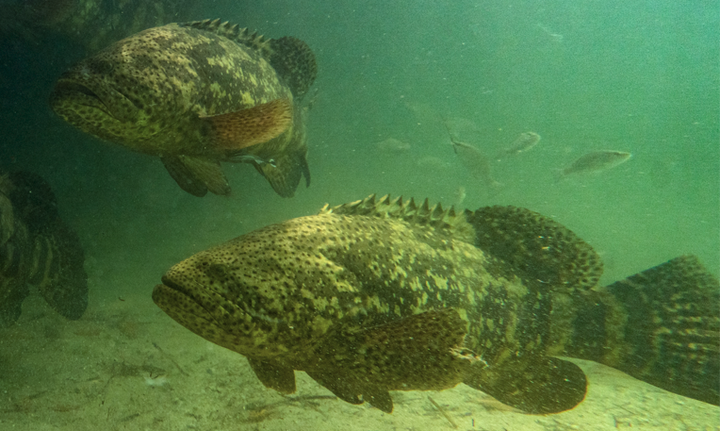How do Fish use Seascapes? (US)
Drivers and Consequences of spatial patterning of Submerged Aquatic Vegetation in Florida Bay
 Goliath Grouper (Epinephelus itajara) tracked at the coastal Everglades, Florida. Photo by Coastal Fisheries Research Lab.
Goliath Grouper (Epinephelus itajara) tracked at the coastal Everglades, Florida. Photo by Coastal Fisheries Research Lab.
A pressing need throughout South Florida, particularly in the coastal Everglades, is understanding the factors that promote sustainable ecosystem services. Of particular interest is the sustainability of recreational fisheries; one of the most economically and ecologically valuable ecosystem services provided by the Everglades (Jackson et al. 2001, Fedler 2009, Stainback et al. 2019). To date, despite the high socioeconomic value, the degree to which the movement and habitat use of recreationally important fish species may be impacted by chronic decreases in freshwater inflows and associated ecosystem effects remains poorly understood throughout the Everglades.
High-resolution Fish Tracking

This project utilizes remote sensing and acoustic telemetry to understand how the submerged aquatic vegetation (SAV) communities in Florida Bay have been impacted by chronic decreases in freshwater inflows and associated SAV die-off and how the resulting patterns of SAV affect the movement and habitat use of Spotted Seatrout (Cynoscion nebulosus), Goliath Grouper (Epinephelus itajara), and Grey Snapper (Lutjanus griseus). We are utilizing YAPS for two fine-scale acoustic telemetry arrays: investigating Spotted Seatrout habitat use in a patchy environment and investigating Goliath Grouper and Grey Snapper habitat use within a juvenile habitat. By studying these aspects of fish movement ecology, we can help inform management and conservation of recreational species through understanding optimal juvenile habitat and how fish utilize SAV seascapes after a disturbance.
Project Partners
- Coastal Fisheries Research Lab
- PhD student Jonathan Rodemann
- Dr. Jennifer Rehage
- Dr. Rolando Santos
For more information about the project, please visit Coastal Fisheries Research Lab, the project page on the FACT Network or contact Jonathan Rodemann at jrode010@fiu.edu

